If art, music, dance, or theater were an important part of your world earlier, the pandemic has turned it upside down. With the ability to travel, attend events and visit museums limited, we have been left casting about for alternatives. Art is meant to be experiential—best when it’s a one-on-one experience with the original.
A picture can’t begin to deliver the feeling of standing next to Michelangelo’s statue of David at the Accademia in Florence. In its presence the stone pulses with energy, muscles ripple, veins throb and eyelids almost blink.
But, in the Covid-19 era we have to make do with facsimiles – photographs, recordings, videos, and webinars mixed with our own personal memories. At a remove – second best – but still satisfying.
Recently, two of my favorite artists, Tony Foster and Donald Judd, were subjects of webinars—the art galleries of the pandemic. Tony is an English watercolorist whom I have known for almost 30 years, and Donald Judd, is the eccentric monumental minimalist (my label) who took over a Texas town and turned it into an art destination. I’ve been a fan of both for years and this month both were celebrated in online webinars.
Tony was interviewed by Duncan Robinson the former director of both the Fitzwilliam Museum, Cambridge and the Yale Center for British Art, and a few days later David Zwirner hosted a webinar honoring Donald Judd, who died in 1994, and whose retrospective at the Museum of Modern Art with simultaneous exhibits at Zwirner’s three New York galleries is the biggest art event of this very difficult year.
Before I started this essay, I asked Tony if I could use online reproductions of his work and he enthusiastically agreed. He told me he’d “be pleased to be next to Donald Judd.”
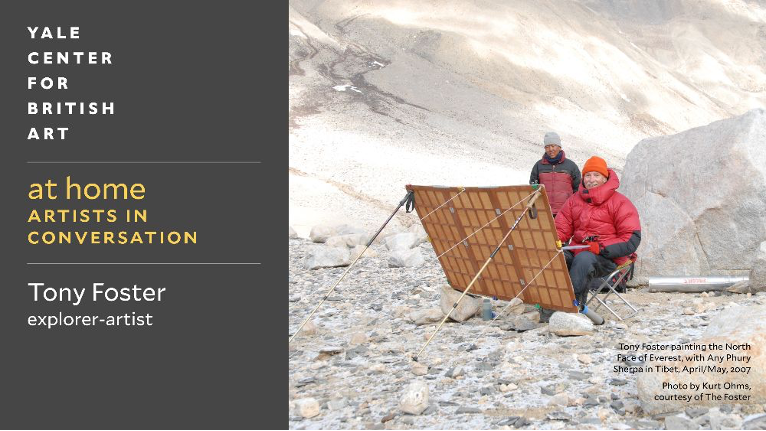
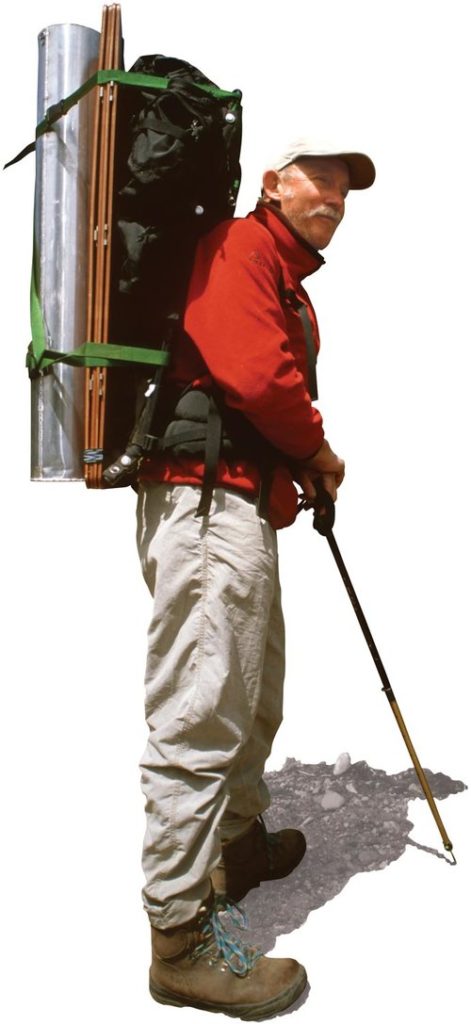
Tony is not, as you may have guessed, your average watercolorist. The Cornwall native is as much explorer and environmentalist as he is painter. His studio is “the world’s wild places” where for over 40 years he has set about creating Journeys – paintings of mountains and canyons, rainforests and deserts, the Arctic and tropics–no small achievement for a watercolor artist.
This is Tony on one of his Journeys – scrolled paper in the tube, a portable chair and easel, a paintbox the size of an Altoid tin, and a handful of very expensive sable brushes – always the same whether he’s painting the South American rainforest, Everest at the 18,000’ level, the jungles of Borneo, the waterfalls of Guyana, or descending into the Grand Canyon.

I met Tony through a friend who had traveled with him on some of his Journeys. Then, in 1998, they invited me to join them on an 18-day raft trip down the Colorado where Tony planned to paint a suite of Grand Canyon paintings.
It was a remarkable trip and watching Tony work as we descended through that majestic canyon gave me an enhanced appreciation for how he delivers his creative and environmental vision. These are not sketchbook size works; the largest are up to 7′ long, and all include written diary notes, small artifacts, and maps of the areas explored. Tony sees these wild places as endangered remnants of earth’s history and feels compelled to memorialize, highlight, and preserve them.
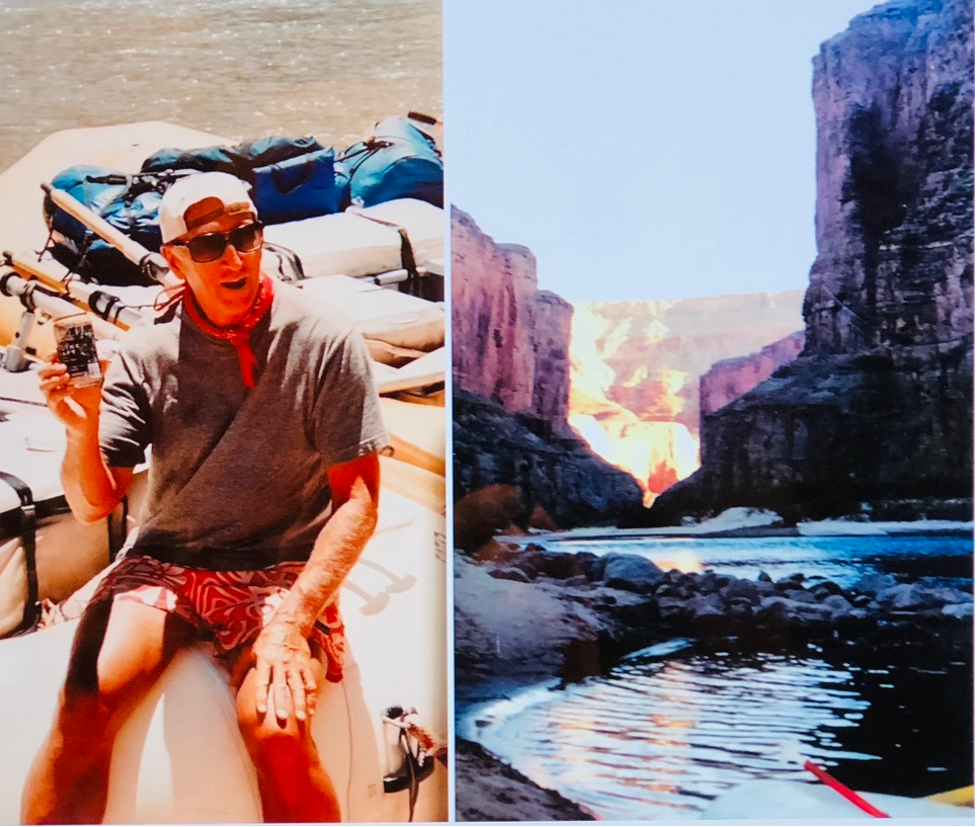
His work is also unusual in that some early admirers recognized that the paintings in each Journey were part of a collective vision, and hoped individual paintings would not be sold piecemeal. As a result, a fund was created and a 14,000 square foot museum/gallery, named The Foster, was built in Palo Alto, California, to house, rotate, and display the work as a whole. In non-Covid times, The Foster is open to the public. Check out the website at thefoster.org. for regular hours.
It would be difficult to imagine a greater contrast in visual art than Tony’s detailed small scale watercolors and Donald Judd’s large sculptural work. I admire both–their range, variety, and differences in aesthetic–but they are polar opposites in scale.
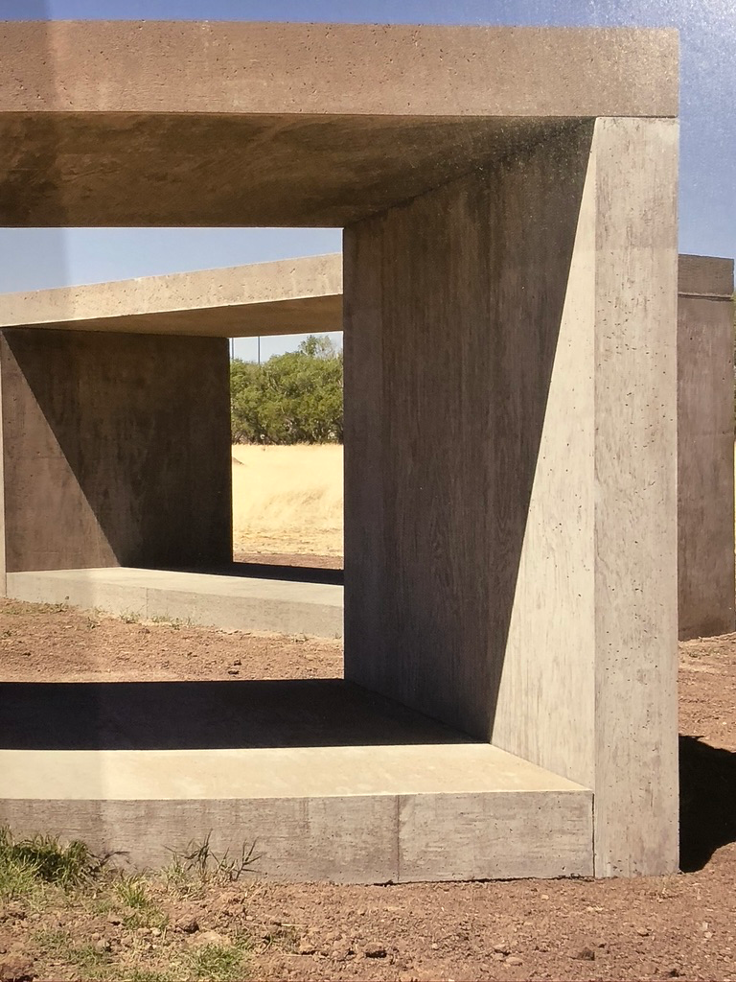
In the 1950s, Donald Judd was an successful artist/art critic based in New York City but by 1971 he became disenchanted with the New York art scene and needed more space. Earlier, he had fallen in love with West Texas, so in 1973 he purchased two large army hangers in the town of Marfa, followed in 1979 by the purchase of Fort D.A. Russell, a decommissioned Army base. Judd was an artist with a “monumental” vision.
The story of Donald Judd and Marfa is fascinating and well-documented in a coffee-table book created by the Chinati Foundation, the non-profit he created to “present and preserve a select number of permanent installations inextricably linked to the surrounding landscape.”
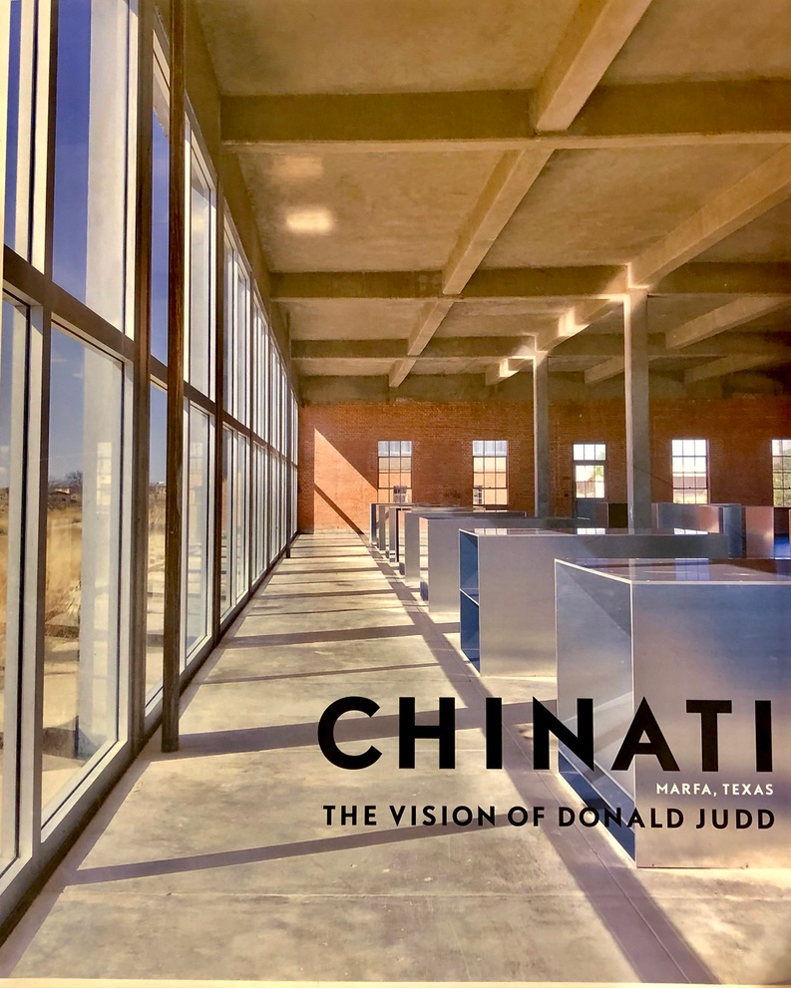
In 1986, he began inviting artists he admired to integrate their works into Chinati (named for the nearby mountains). When you own an Army base there’s room for almost anything, and Donald Judd gave each of eleven artist friends a barracks building to create and integrate their artistic visions. Among the famous artists in this group are Dan Flavin, Claes Oldenburg, and Carl Andre.
M and I visited Marfa on a tour of West Texas in 2018. Fifty years after Judd moved to Marfa, it’s become a well-established art destination, e.g. one day at lunch we spotted Anthony Bourdain in the restaurant, and later that year the Marfa installment of Parts Unknown was one of the last he did before his suicide. We spent three days in Marfa including a day long private tour of Chinati led by Sterry Butcher, a local who writes a monthly column for Texas Monthly. Great trip.
My favorite example of Judd’s eccentric vision is this hangar, filled with 100 milled aluminum “boxes,” each of which is different though they share identical dimensions. Judd redesigned the hangar, added floor to ceiling windows so the only light admitted would be natural light allowing the boxes to change color as the sun moves across the West Texas prairie.
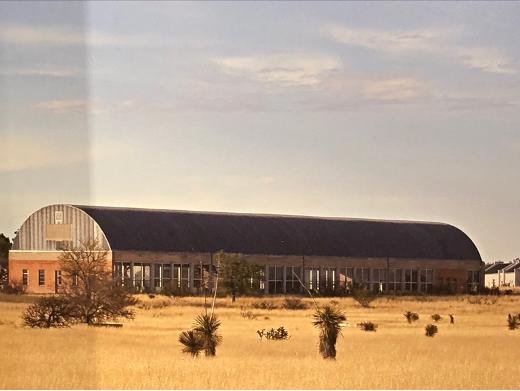
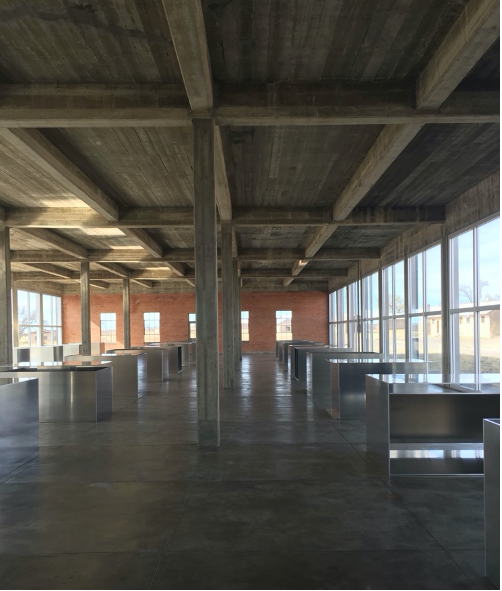
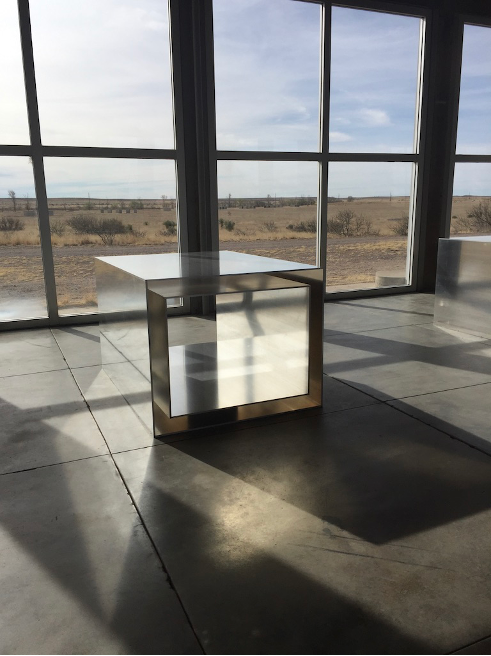
An enormous amount has been written about both of these artists, but I was taken as much by the idea of how we experience art during the pandemic as by the art itself. I feel the same about music, film, dance, and theater, so I plan to write about those experiences in upcoming posts. They are art at a remove, but they are not unsatisfying…just different. Watch this space.
































I will sure watch it!
Enjoyed reading your article and will google the artists for more information…
must be a most wonderful place with all that space and light…
the variety of art is breathtaking, and so livegiving…